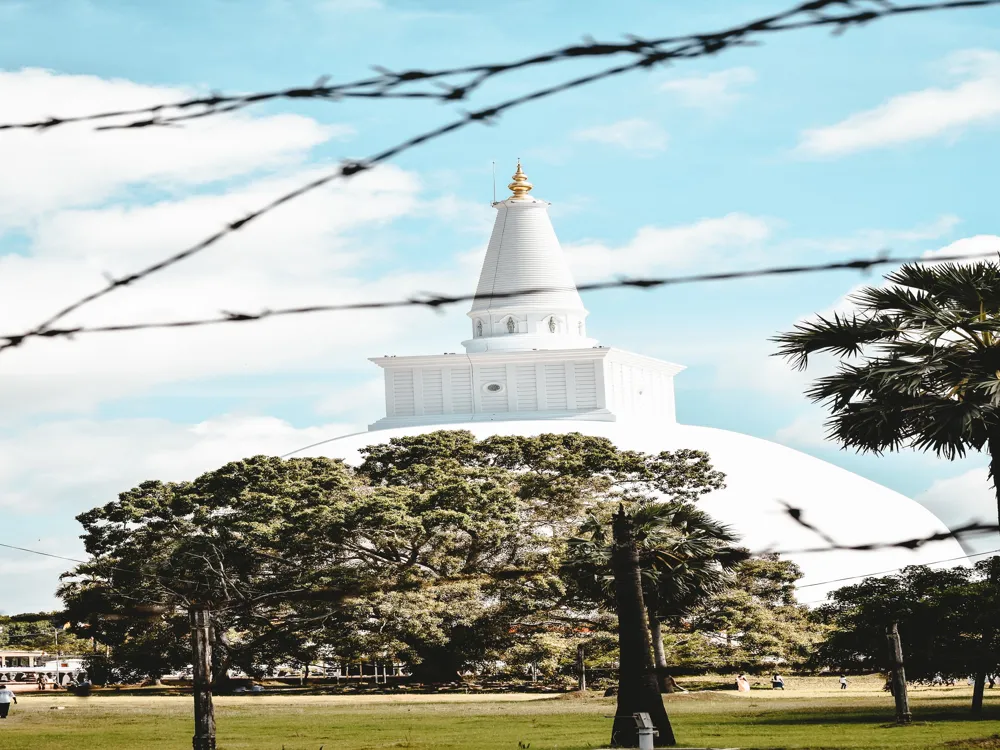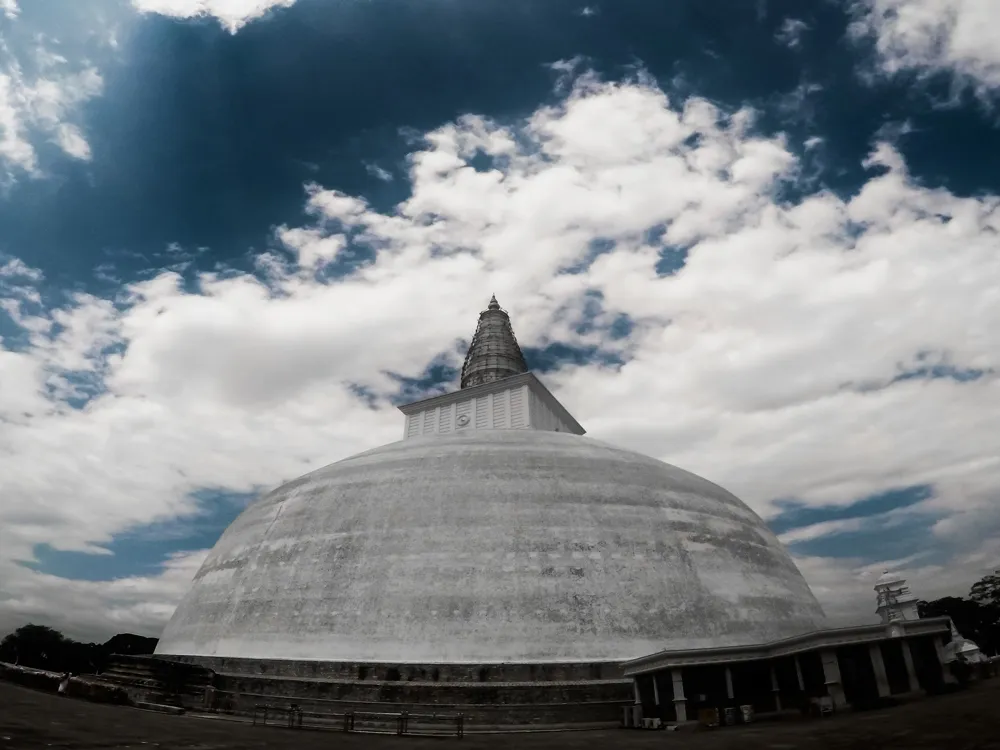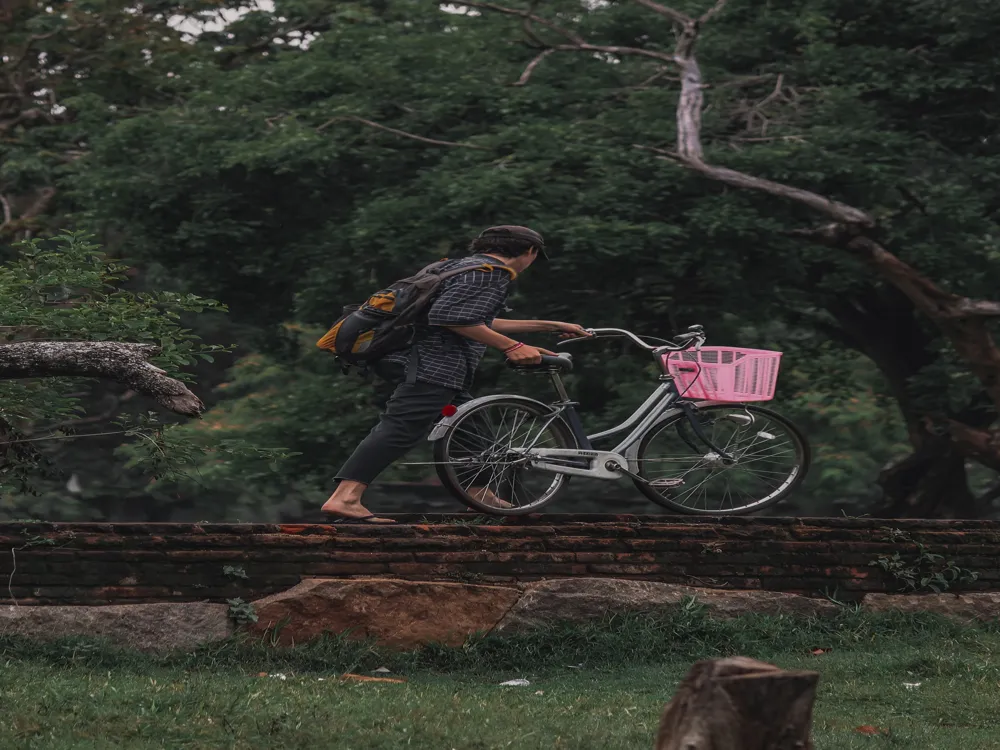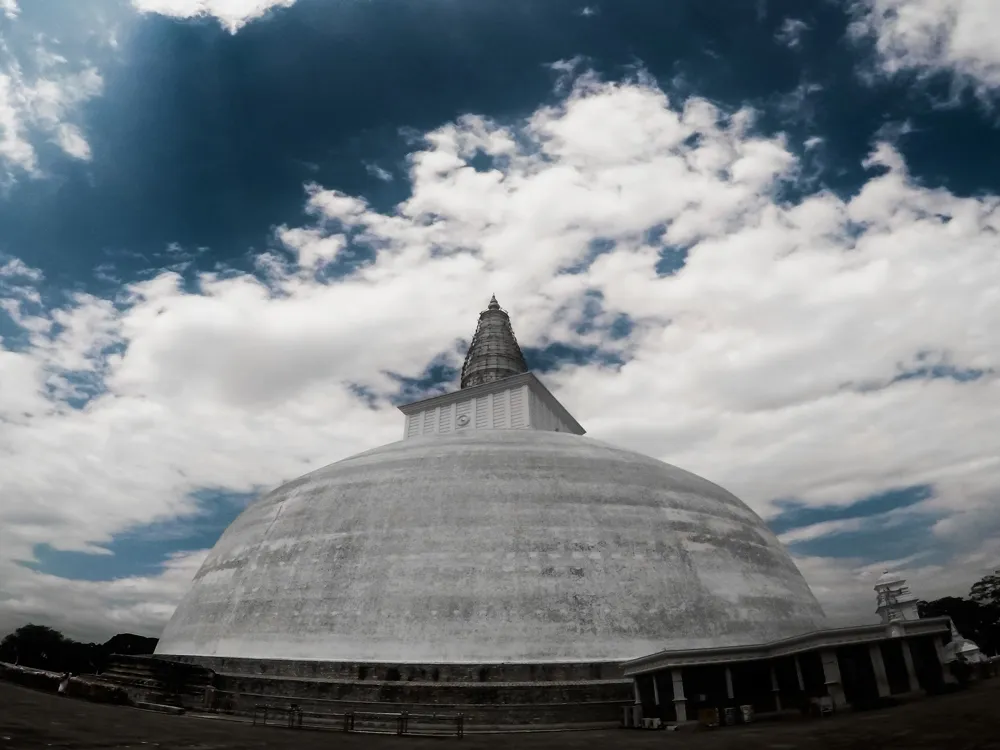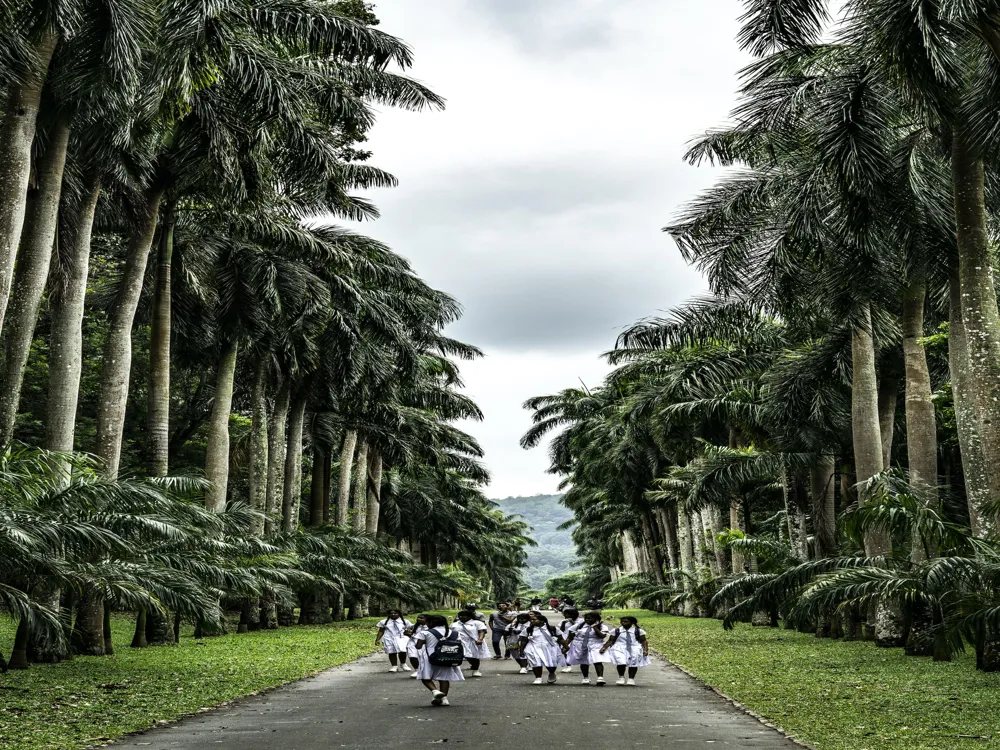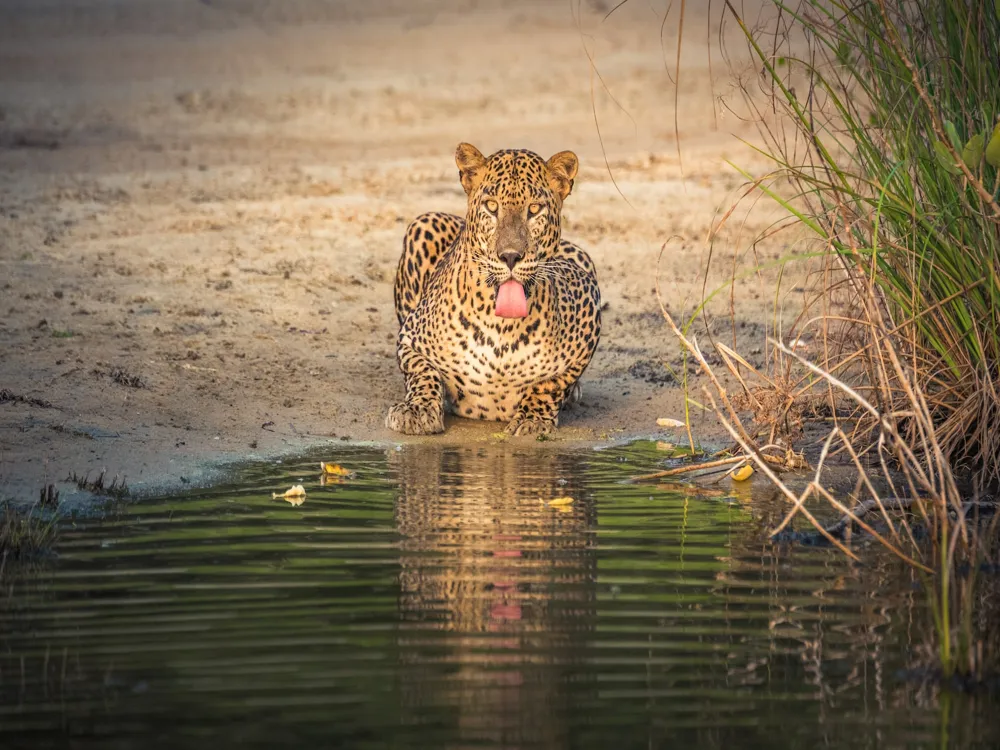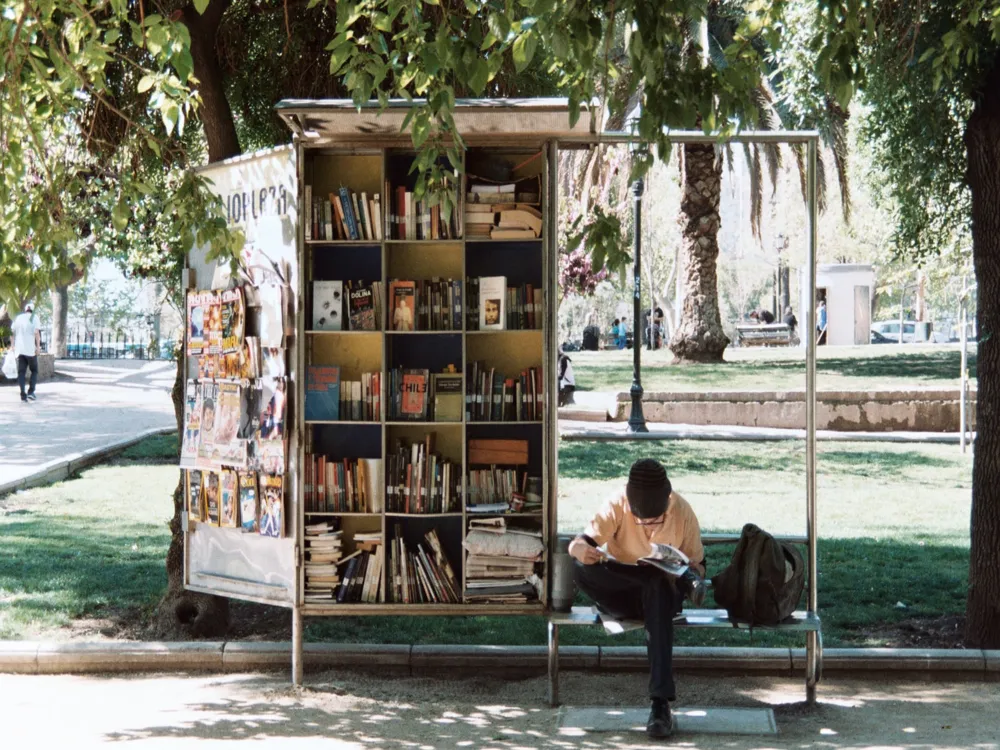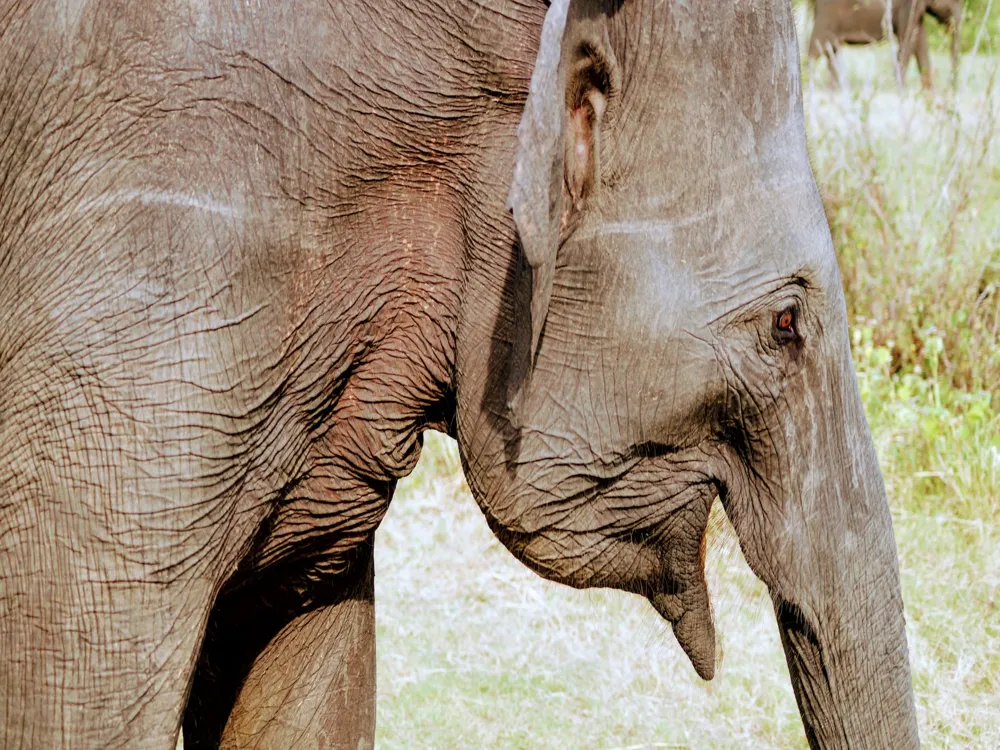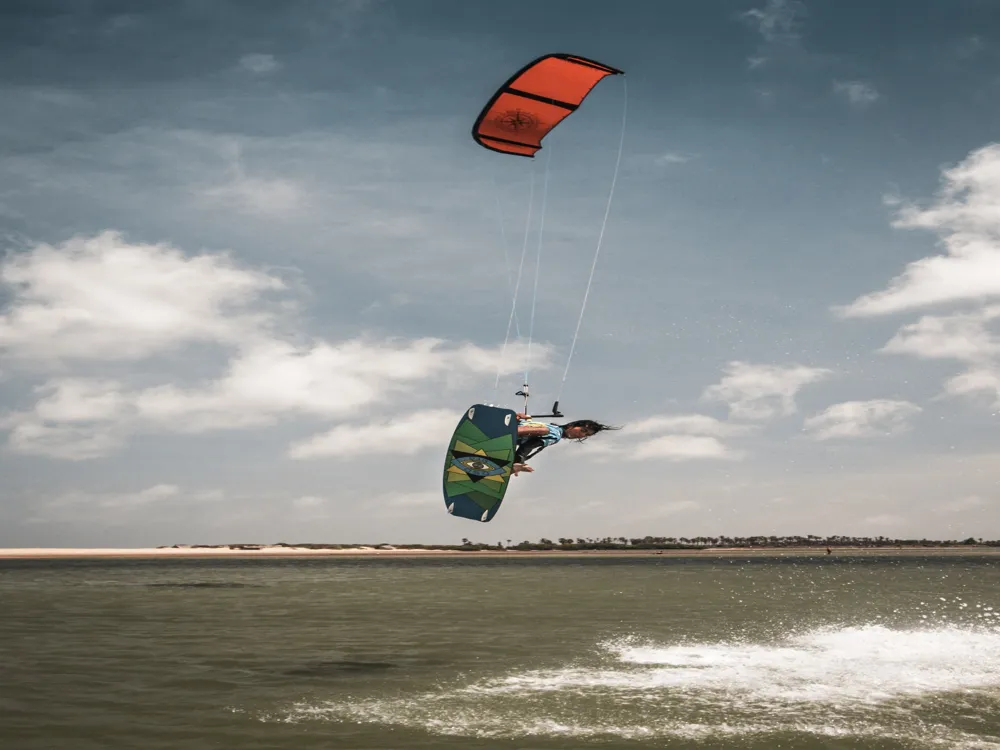Ruwanweliseya, also known as the Great Stupa, is one of the most ancient and significant stupas in Sri Lanka. Located in the sacred city of Anuradhapura, it stands as a testament to the island's rich Buddhist heritage. Built by King Dutugemunu in 140 B.C., this colossal structure is renowned for its architectural grandeur and religious significance. Ruwanweliseya, with its bubble shape, symbolizes the bubble of milk that Buddha once held in his hand to demonstrate the fragility of life. This majestic monument is not only a revered site for Buddhists but also a symbol of peace and unity for the entire nation. The stupa is surrounded by a large number of smaller shrines and structures, adding to its spiritual ambiance. The history of Ruwanweliseya is deeply interwoven with the legends and chronicles of ancient Sri Lanka. According to the Mahavamsa, the Great Chronicle of Sri Lanka, the construction of the stupa was a monumental effort, involving thousands of workers and the collaboration of various communities across the island. The stupa's completion is celebrated as a unifying event that brought together the nation. Ruwanweliseya has undergone several renovations and restorations throughout history, each time reinforcing its significance as a symbol of Buddhist devotion and Sri Lankan identity. The architecture of Ruwanweliseya is a marvel of ancient engineering and artistic skill. Its dome, towering to a height of over 300 feet, is an impressive sight, visible from miles around. The stupa's unique bubble shape is considered a significant departure from the earlier hemispherical stupas, reflecting a unique style that became influential in later Buddhist architecture. The compound of the stupa is adorned with intricately carved vahalkadas (frontispieces) at its cardinal points, each depicting various episodes from the life of the Buddha and Jataka tales. These frontispieces are masterpieces of ancient Sri Lankan sculpture, showcasing the high level of craftsmanship of the time. The main dome of Ruwanweliseya is built with sun-dried bricks and is covered with a thick layer of white plaster, giving it a luminous appearance under the sun. The pinnacle of the stupa, traditionally called the 'Kotha', is adorned with precious gems and stones, symbolizing the Buddhist universe. Surrounding the stupa is a paved courtyard, and a series of concentric rings of stone pillars suggest that the stupa was once enclosed by a large circular structure, possibly a meditation hall for monks. As a sacred site, visitors are expected to dress modestly. It is recommended to wear clothes that cover the shoulders and knees. Removing shoes before entering the temple premises is a sign of respect. Maintain a respectful demeanor and observe silence, especially during prayer times. It's important to show reverence to the religious practices and rituals taking place. While photography is allowed, it's essential to avoid taking pictures in a manner that may be disrespectful, such as posing in front of statues or with your back to them. Ruwanweliseya is located in Anuradhapura, a major city in the North Central Province of Sri Lanka. The city is well-connected by road and rail from major Sri Lankan cities like Colombo and Kandy. Visitors can opt for buses, trains, or private vehicles to reach Anuradhapura. From within the city, Ruwanweliseya is easily accessible by local transport such as tuk-tuks and taxis. The journey offers a glimpse into the serene countryside and rich cultural landscape of Sri Lanka. Read More:Overview of Ruwanweliseya of Anuradhapura
Architecture of Ruwanweliseya
Tips When Visiting Ruwanweliseya
Dress Appropriately
Observe Silence and Respect
Photography Etiquette
How To Reach Ruwanweliseya
Ruwanweliseya
Anuradhapura
₹ 21,999 onwards
View anuradhapura Packages
Weather :
Tags : Historical Site
Timings : 24 Hours
Entry Fee : Free
Planning a Trip? Ask Your Question
Anuradhapura Travel Packages
View All Packages For Anuradhapura
Top Hotel Collections for Anuradhapura

Private Pool

Luxury Hotels

5-Star Hotels

Pet Friendly
Top Hotels Near Anuradhapura
Other Top Ranking Places In Anuradhapura
View All Places To Visit In anuradhapura
Faq on Anuradhapura
What is Ruwanwelisaya?
Ruwanwelisaya is a stupa, considered one of the most important Buddhist shrines in Sri Lanka. It is located in the ancient city of Anuradhapura and is revered for its religious significance and architectural grandeur.
When was Ruwanwelisaya built?
Ruwanwelisaya was constructed in 140 B.C. by King Dutugemunu, who reigned over the island and is celebrated for unifying Sri Lanka under Buddhist principles.
What is the significance of Ruwanwelisaya?
It symbolizes the enlightenment of the Buddha and his teachings. The stupa is also a monument of peace, unity, and faith, embodying the dedication of the Sri Lankan people to Buddhism.
What makes Ruwanwelisaya unique?
Apart from its sheer size, the stupa is famous for its architectural design, the craftsmanship of its sculptures, and the sacred relics it houses, including the perfect water bubble relic of Lord Buddha.
Can visitors enter Ruwanwelisaya?
Visitors can enter the premises of Ruwanwelisaya, but access to the inner chamber of the stupa, where the relics are housed, is restricted.
View anuradhapura Packages
Weather :
Tags : Historical Site
Timings : 24 Hours
Entry Fee : Free
Planning a Trip? Ask Your Question
Anuradhapura Travel Packages
View All Packages For Anuradhapura
Top Hotel Collections for Anuradhapura

Private Pool

Luxury Hotels

5-Star Hotels

Pet Friendly
Top Hotels Near Anuradhapura
Other Top Ranking Places In Anuradhapura
Faq on Anuradhapura
What is Ruwanwelisaya?
Ruwanwelisaya is a stupa, considered one of the most important Buddhist shrines in Sri Lanka. It is located in the ancient city of Anuradhapura and is revered for its religious significance and architectural grandeur.
When was Ruwanwelisaya built?
Ruwanwelisaya was constructed in 140 B.C. by King Dutugemunu, who reigned over the island and is celebrated for unifying Sri Lanka under Buddhist principles.
What is the significance of Ruwanwelisaya?
It symbolizes the enlightenment of the Buddha and his teachings. The stupa is also a monument of peace, unity, and faith, embodying the dedication of the Sri Lankan people to Buddhism.
What makes Ruwanwelisaya unique?
Apart from its sheer size, the stupa is famous for its architectural design, the craftsmanship of its sculptures, and the sacred relics it houses, including the perfect water bubble relic of Lord Buddha.
Can visitors enter Ruwanwelisaya?
Visitors can enter the premises of Ruwanwelisaya, but access to the inner chamber of the stupa, where the relics are housed, is restricted.







